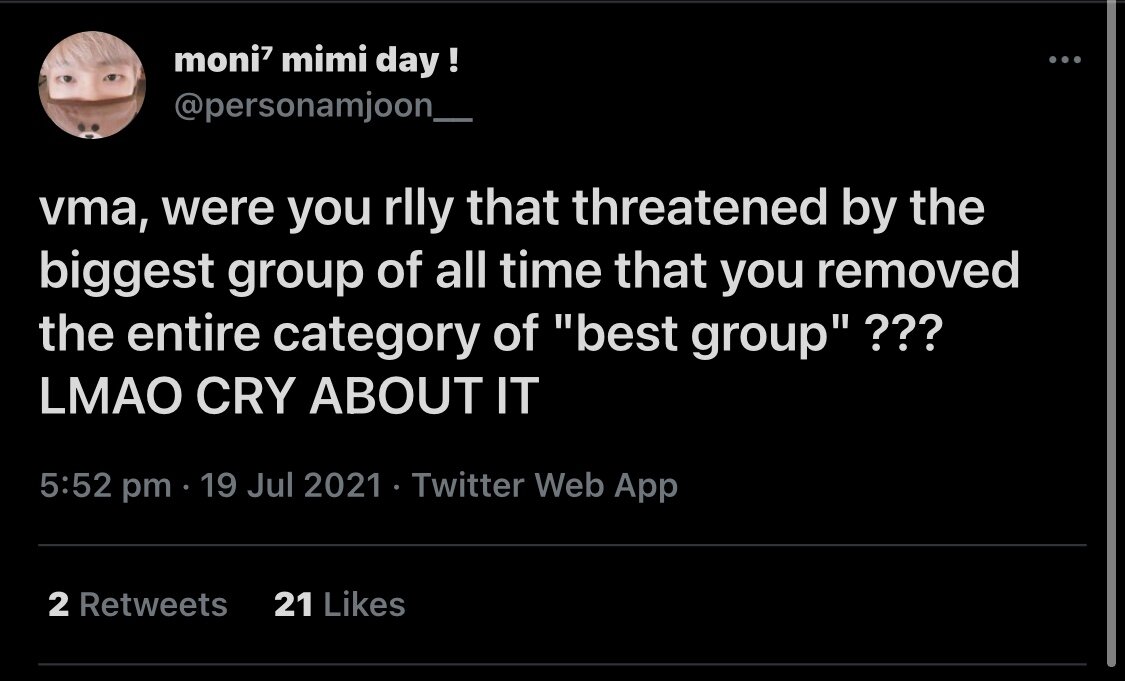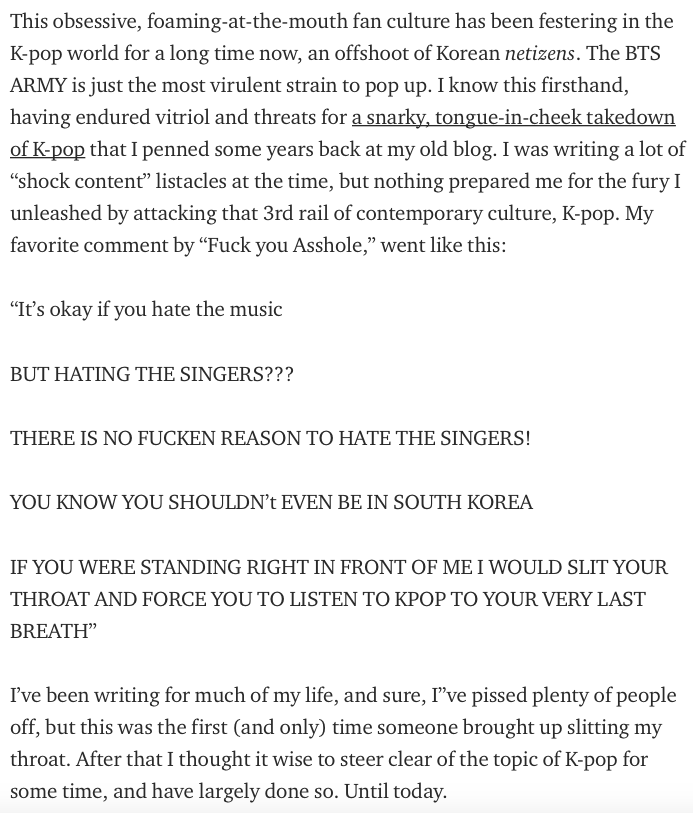BTS Butter Bombing? A Billboard Accounting Fraud. iii. (Raw Data & #ApologizetoSuperM)
READING TIME: 10 MINUTES
Please subscribe for more content by email or the RSS block below.
Commentary
In respect of Parts 1 and 2, sometimes the proof isn’t in the pudding it’s in the ingredients: thus here is the raw data supplied for viewership. This post shows the collected data hasn’t been manipulated into graphs to portray a certain story, it’s all been constructed as simple as possible to bring attention to the outlier notion of the BTS products, flaw of the Hot 100 formula and over-exaggerated articles by Billboard Magazine.
With acknowledgement of how the fundraising model is being handled, it feels almost a duty to at least make the readership aware of the risks the Army are exposing themselves to in the name of a statistic/short term self-gratification, and the negative influence that this could have if replicated on a wider scale.
Lastly, some traction of polarising views came about on Parts 1 and 2. Due to the Twitter feed model constantly updating, not all views have been able to be captured, but a frequent number of them in relation to this article have been posted below if readers are interested - alongside with a rebuttal. Also pleased to see this made airwaves across other platforms such as Reddit LipStickAlley showing the diverse audiences who care about the subject matter. It seems to be construed by many this is a personal attack and not really the truth of the analytics behind the data, not the subjective opinion of a creative product which has rarely been mentioned.
Billboard Data and Critique of the Funding Model
Figure 1. Raw data of No. 1s over past year (relating to Figure 1 in Part 1) to compare and contrast Butter/Permission to Dance with other songs of the same accolade.
Figure 2. A snippet of this week’s Billboard article detailing how Permission to Dance acquired its total figure (94% of points coming from sales, which the metric has the lowest allocation for points). Note the writers don’t generally mention the price of a product (quoting ‘$0.69’) but apparently it must have been significant to the readership for this case. Is there a reason why, perhaps? Also, just another conspiracy…check out numerous previous Billboard articles and again generally they tend not to report the No. 2’s breakdowns often, but have consistently done so for Butter’s chart run. It’s seemingly very tongue-in-cheek.
Figure 3. All 3 images above indicate the raw data for Butter’s reign at Week 5, 6 and 7, and comparing it to songs of a similar reign.
Figure 4. Albeit blurry, this is the first 7 week’s chart run of Butter WW. It has been understood that Butter increased in Week 8 in some regions due to Permission to Dance and Butter being sold as one joint-product but credited to Butter.
Figure 5. This is the most recent radio score numbers in America. The whole point of this is to show that not only can a song succeed on airplay even if the label/distributor doesn’t secure a deal or give a big push, even if the radio stations themselves don’t feel compelled enough to have a song on airplay, if the demand via call outs surge, then the record may have no choice but to supply a placement and the song will receive airtime. Call outs are important to understand consumer behaviour. For such a big US fanbase why aren’t there then enough callouts? Butter has an abysmal arbitrary score of 57 (under 76 the record is generally weak on radio so 57 is absolutely poor for a multi-week Top 10 / previous No. 1 song). It has a poor positive score, poor net positive score, poor favourites score (where people want the song to be played), and a high negative score, all for a song only released 2 months ago - ever since it usually takes time for radio airplay to build, it shouldn’t feel as negative as it’s rather new, but evidently listeners of all demographics aren’t interested.
Concerns on the Funding Model
Figure 6. One may believe the US fund-collector appears “trustworthy” because “wE aRe a FAndOM anD oNe Big Ww faMiLy” and fans might believe the funding structure is legitimate for now. Firstly, remember that a significant amount of these wired funds have to go towards the base exchange rate, cross border fee and fixed commission fee before they even arrive to the receiver’s account to spend at the online retailer, so you have to constantly leverage your donation commitments just to match your purchase target - and this is week in week out. Also if the fandom think they’re ‘trustworthy’ account holders, then why do banks, investment firms, insurance companies, accounting firms and institutions of a similar nature, regardless of how big/small the fee, have to have certified professionals with years of professional and ethical training and licenses just in order to handle sums of funds? $40,000 is a large sum of money for most tax brackets. So how do these submitting individuals have acknowledgement their fiduciary is genuine, especially when this isn’t for a charitable cause / not classified as a non-registered charity under the Paypal Giving Fund platform, other than the element of goodwill? This isn’t one’s family or close friends, it most likely a stranger. Moreso, it seems a bit suspicious that on a weekly basis, repeated transactions of funnelled fees are going undetected by cross-border fintech through the same circles of account holders.
Feedback from Part 1 and 2 and Identifying Cult Behaviour
So apparently, when Part 1 and 2 were posted, it led to the Twitter hashtag #ApologizetoSuperM. Mind you, negative reception flocked to the posts first. With a literal zero following on social media, it’s hypothetical but plausible the army actively go online insecurely searching ‘BTS fraud’ / ‘BTS Bombing’ (or searches of a similar nature) on their search functions just to scour out people with opposing views, even though this is supposed to mostly be a world of free speech.
Below are a selection of snippets that were found circulating around the hashtag and/or the articles with some responses.
Figure 7. Thank you @doyutiful who is the originator of the hashtag and traffic. It’s nice to be credited as a journalist, but honestly this investigation wasn’t done for the purpose of a publication, it was done as a general think piece and a social experiment (you passed it by the way). Glad to see the reactions nonetheless as they surpassed my expectations.
Figure 8. Exactly, don’t take it personally since it’s less about the product or supplier, and more about the auditor and accounting. Don’t shoot the messenger if the real numbers don’t lie.
Figure 9. Some interesting insights here. @DiMonsterr has hit the nail on the head, which accounts for about 75%-80% of achievements from fanbases in the US.
Figure 10. Not sure where @doyutiful interpreted that overseas Army would intentionally want a copy of a record that comes from the US when they could just easily obtain it from their own phone in the comfort of their bed from their local retailer (unless you are discussing the point on saving high shipping fees). The principle is that funds are wired across to the US to aggregate a reasonable monetary pool in order to mass-purchase a product in the US, thus get quantitatively measured and viewed as a ‘successful seller’ in that territory (see conspicuous consumption, as mentioned in Part 1). Bulk-buying works for wholesalers to sell onto their end-consumer. But as the end-consumer, there’s no sustainable (environmental and economic) model of shifting units about anymore.
Figure 11. This is the most fair/neutral conclusion at the end of the day.
Figure 12. I guess @personamjoon_ hasn’t yet become aware of The Beatles, Pink Floyd, Queen, The Rolling Stones, ABBA, Fleetwood Mac, Led Zeppelin, U2, Nirvana, Red Hot Chill Peppers etc. Clarity is important, as IFPI, Forbes and other outlets report BTS as the world’s ‘current’ biggest group, not of all time. And before the Army bring up touring “receipts”, many, if not most, of these groups wrote their own material (some extremely introspective and visionary and still uphold well today) and sold plentiful units, so didn’t require touring or merchandising as a supplement for their bread and butter (this pun was unintentional). Also their music videos, some of which are culturally significant, weren’t subjected to streaming-farms or in a social media voted category to earn credibility, they were selected by industry specialists and professionals.
Figure 13. Such an example to the extremes the fandom will go to is down below in relation to this post. The username has been redacted in protection of the user from the Army.
Figure 14. Bringing to light from a snippet online of the mindsets the fandom can bring regardless of the principles of free speech and subjectivity. Source: https://medium.com/@christharp/the-cult-of-bts-ab446bc7bd69
Figure 15. As mentioned in Part 2, within seconds nearly 3000 people agreed on pulling the ‘xenophobia’ card. Industry curation and governance comes from the designers and shareholders, not the consumers. That’s why they’re the professionals in the industry. With all the funds you’re supplying and bribery isn’t working? Then the shun is left to wild imagination of speculating ostracisation.
Figure 16. This is genuinely terrifying, both the content and the numbers. This is more than just a cult. It’s almost bordering a religion (without foundations) for some. And this isn’t a joke for most, they’re serious.
Other discussions of cult mentality
https://www.reddit.com/r/kpoprants/comments/hdayh4/armys_have_a_cult_like_mentalitiy/
Lastly, the latest attempts of US “domination”
Figure 17. Again proof of the auditing loophole via BH retailers, as opposed to popular music online retailers like iTunes and Amazon Music. Hey @Army_Connect, your purchase of the original wasn’t good enough. So they’ve indirectly convinced you to foolishly fork out on purchasing the exact same record just with an alternative cover, even if it’s $0.69, and the design isn’t exclusive or premium it looks like it took 60 seconds on photoshop. And they’re helping YOU out? It’s…the……Exact……same……recording. How are you being incentivised by this sc-am/heme? It’s smoke and mirrors.
























